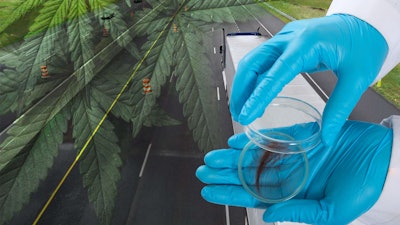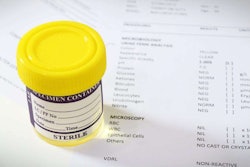 CCJ explored the push toward allowing hair follicle drug testing in-depth in August, detailing major fleets’ experience in performing hair tests and urine tests, and why those fleets have pushed the hair testing rule over the past decade. Read that coverage here.
CCJ explored the push toward allowing hair follicle drug testing in-depth in August, detailing major fleets’ experience in performing hair tests and urine tests, and why those fleets have pushed the hair testing rule over the past decade. Read that coverage here.The word “mandatory” has been batted around in headlines and social media posts the last few weeks describing long-in-the-works reforms to driver drug testing protocol. But what, exactly, will be mandatory for fleets? And when?
In short, nothing will be mandatory for carriers, really. And as to when any reforms to drug testing might be made — likely not for at least another 18 months, and maybe longer, and those reforms will be optional for fleets when performing driver drug tests.
I’ve seen posts lately on social media platforms and websites along the lines of “Mandatory drug testing almost here,” or “Mandatory hair testing proposal released,” in describing the proposed set of guidelines issued by the U.S. Health Department as to how fleets and drug test administrators should handle hair testing once DOT allows it.
Despite lingering confusion, fleets will not be required to use hair sample testing in driver drug tests, nor will drivers be required to take a hair sample drug test in a blanketed rule. And those regs certainly aren’t “almost here.”
In reality, fleets will be able to test drivers for hair in lieu of a urine test if they so choose. Thus, drivers applying for jobs at fleets that choose to do so must submit to that hair sample testing or face a flag in the U.S. DOT’s CDL Drug & Alcohol Clearinghouse – the database that tracks drivers who have failed or refused a drug test and that fleets must check when making hiring decisions. These changes would only take effect after DOT finalizes a rule to do so, which is still likely at least a year out — and potentially much farther. It wouldn’t be surprising to see the rule change dragged out several more years.
The reforms, if made final by DOT, will allow fleets “to use hair testing as an acceptable alternative” to urine testing, said Kathy Close, a compliance advisor at J.J. Keller. “It’s permitted. It’s not mandatory,” she said.
The guidelines released this month by the Department of Health and Human Services’ (HHS) Substance Abuse and Mental Health Services Administration (SAMHSA) come as part of a requirement from Congress. In the 2015 FAST Act, Congress required DOT to change its rules to allow fleets to use hair sample testing as a DOT-recognized option for screening drivers for drug use in pre-employment tests. However, Congress said that HHS and SAMHSA must develop guidelines for DOT to adopt before it could change driver drug testing regulations.
However, the guidelines issued by SAMHSA this month are still only proposed guidelines, open for public comment until Nov. 9 in the regulations.gov rulemaking portal via this link. Those guidelines must still go back through the rulemaking process to be made final, and then sent to DOT for rulemaking to be completed there. That bureaucratic process likely will take 18 months or more.
In short, HHS’s proposed guidelines would allow hair specimen testing as a federally accepted drug testing option and set the technical parameters around collection and analyzing hair specimens.
But they also require a urine sample to be collected alongside the hair sample when a person is subject to federally required drug tests, such as drivers in a pre-employment screening. That urine sample would be tested if “a donor is unable to provide a sufficient amount of hair for faith-based or medical reasons, or due to an insufficient amount or length of hair,” the guidelines state. Likewise, the urine test would be used as a back-up if the driver tests positive via hair sample but contests the results.
Allowing urine as a back-up could remove some of the teeth of the regs, said Jared Rosenthal, head of drug testing provider Health Street. His company works with about 1,000 fleets and owner-operators performing DOT drug tests. “That was one of the things that jumped out at me,” he said. “I think in some ways that doesn’t make sense.”
Likewise, there are still lingering questions as to variances in hair, such as color, texture and length, and as to how HHS and DOT will navigate those questions and concerns. As Rosenthal put it, among many in the drug testing community, “it was sacrosanct that urine [testing] was it,” he said. “It never seemed to be that DOT would be able to bridge the gap while still holding true to some of their principles they seemed to have always held,” such as the universality of urine testing and the long-standing use of urine tests as the standard.
Among the small- to medium-sized fleets that Rosenthal works with, he sees few migrating toward hair testing even after the regs take effect, whenever that might be. “As much as they support the idea of a sober workforce, they think the existing guidelines are achieving that,” he said. “There’s no clamoring to do a more expensive test, that’s for sure.”
CCJ explored the push toward allowing hair follicle drug testing in-depth in August, detailing major fleets’ experience in performing hair tests and urine tests, and why those fleets have pushed the hair testing rule over the past decade. Read that coverage here.









